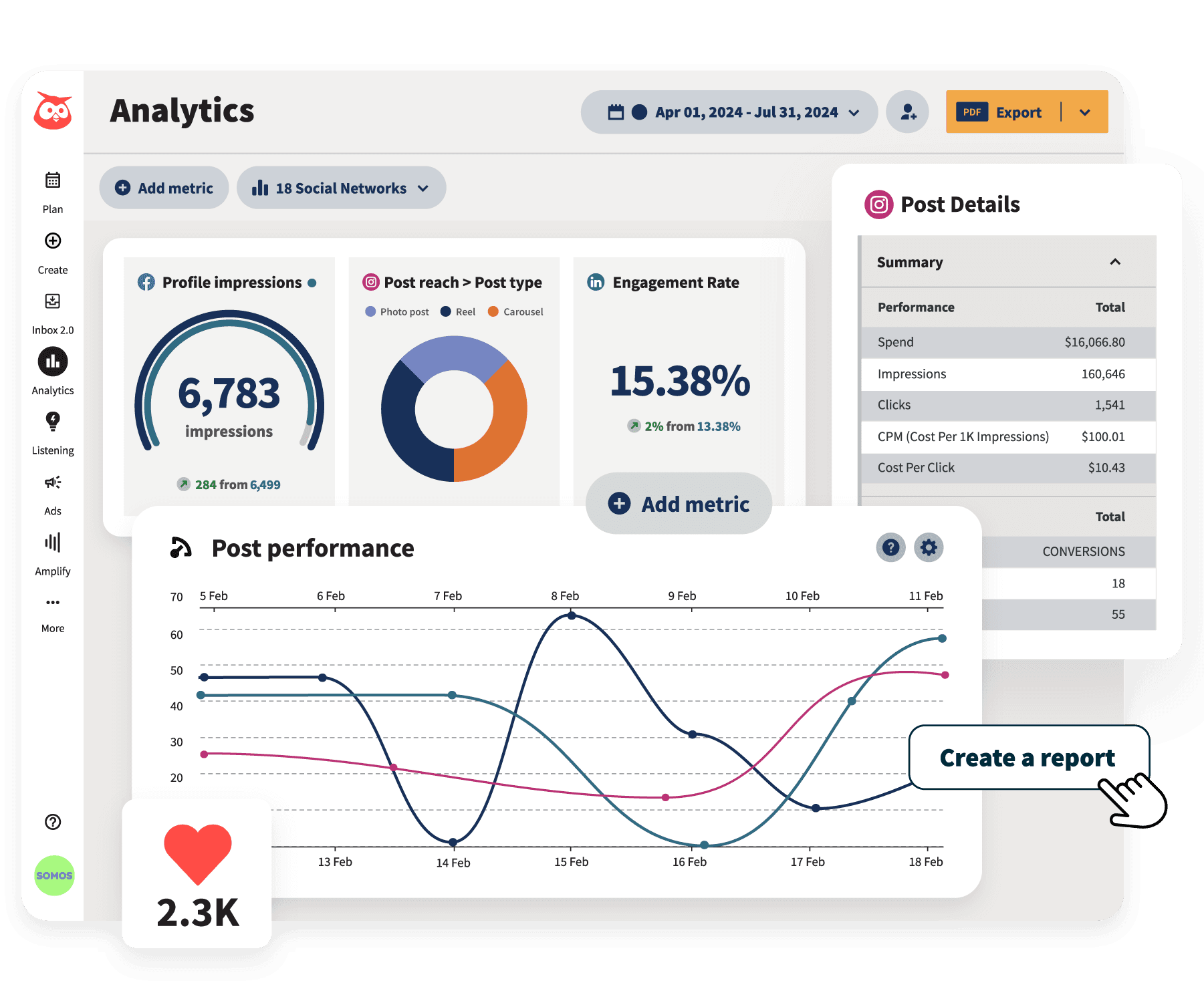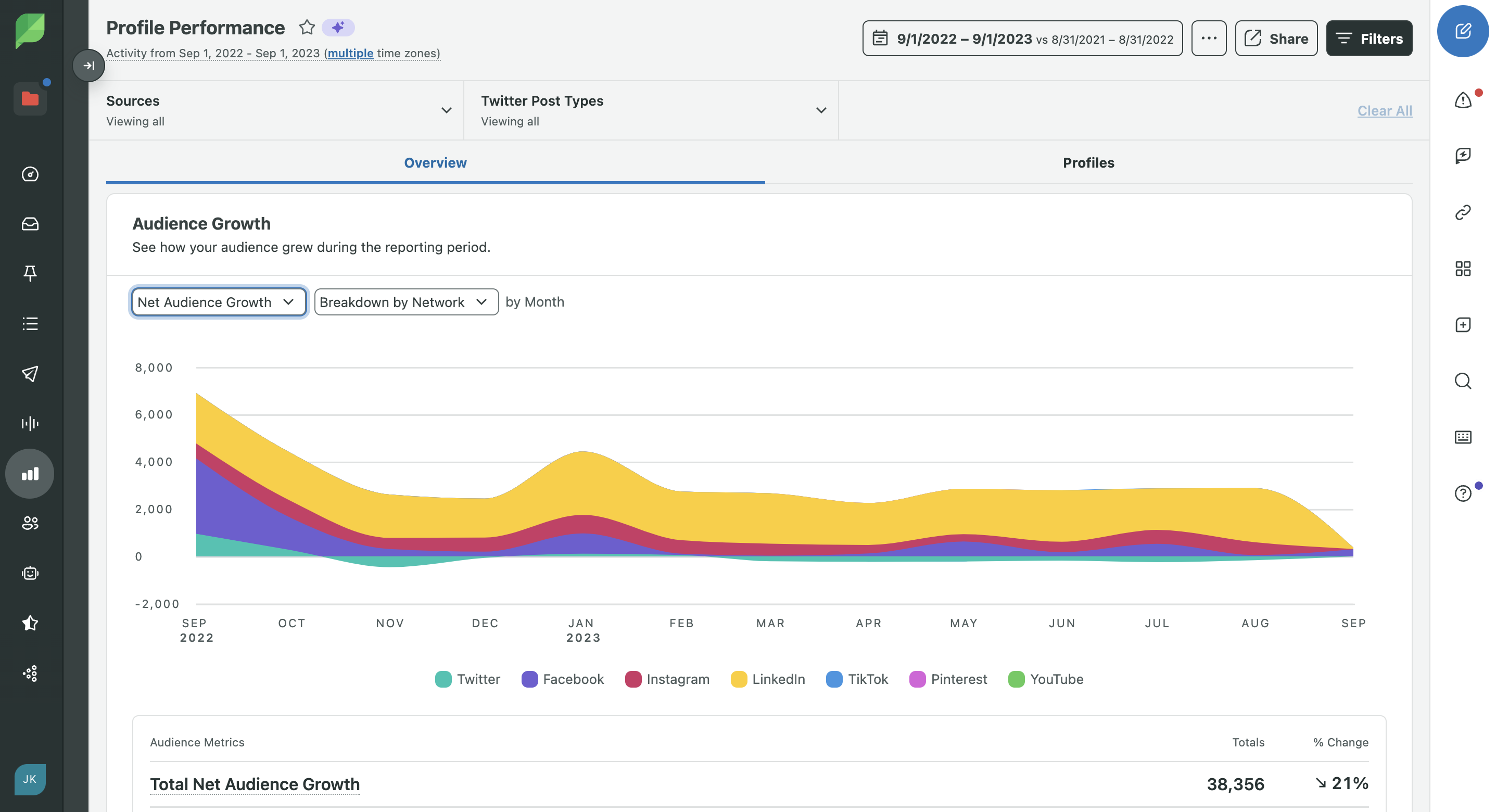Using AI Tools to Enhance Your Social Media Analytics Report Template
Meta Description: Discover how AI tools can transform your social media analytics reporting. Learn about key tools, practical guidance, and the benefits of leveraging AI for better insights and efficiency.
In today’s rapidly evolving digital landscape, social media is no longer just a platform for connecting with friends and family. It has become a powerhouse for businesses seeking to engage customers, drive brand awareness, and ultimately boost sales. However, extracting actionable insights from social media data can be daunting. This is where Artificial Intelligence (AI) comes into play. By leveraging AI tools, businesses can enhance their social media analytics report templates, providing meaningful data that facilitates informed decision-making.
My name is Daria Nowak, and I have over 5 years of experience in SEO and digital marketing. I've had the pleasure of working with more than 20 companies to optimize their online presence and analytics strategies. In this blog post, we'll explore how AI tools can streamline your social media analytics processes, making them more effective and efficient.
Overview of AI Tools for Social Media Analytics
The realm of AI in social media analytics is burgeoning with numerous tools designed to simplify the data collection and reporting processes. Here are some widely-used AI tools you can integrate into your analytics efforts:
| Tool | Description | Key Features |
|---|---|---|
| Hootsuite Insights | Offers advanced listening and analytics capabilities. | Advanced reporting, customizable dashboards, sentiment analysis.  |
| Sprout Social | Comprehensive management tool that includes robust analytics. | Engagement tracking, competitor analysis, automated reporting.  |
| Buffer Analyze | Focuses on measuring performance across multiple platforms. | Scheduled reports, performance benchmarking, visual reports.  |
| HubSpot’s Social Media Management Tool | Combines social media management with built-in analytics. | Integrated marketing platform, CRM features, detailed reporting. |
| Gong.io | Helps analyze sales conversations for insights into customer sentiment. | Automated insights, conversation analysis, sales performance tracking. |
| Crystal Knows | Provides personality insights to optimize engagement. | AI-driven persona analytics, tailored content recommendations. |
These tools not only help you gather data but also assist in deriving actionable insights.
Real-World Case Studies
Consider the case of a regional coffee shop chain that incorporated an AI-driven social media analysis tool. By utilizing Sprout Social, they were able to optimize their posting schedule based on engagement data, increasing customer interactions by 30% within six months. Another success story involves a tech startup that used Hootsuite Insights to pivot its marketing strategy based on audience sentiment analysis, leading to a 25% spike in their conversion rates.
These examples demonstrate the tangible benefits of integrating AI tools into your social media analytics workflow.
Quantitative Data and Statistics
AI is becoming an essential tool in digital marketing. According to a report by MarketsandMarkets, the AI in marketing sector is projected to grow from $5.6 billion in 2020 to an astounding $40.09 billion by 2025. Further, research from Forbes reveals that businesses using AI for marketing enjoy a customer engagement increase of approximately 37%.
These statistics underline the significant potential of AI in boosting social media performance.
Specific Benefits of AI in Social Media Analytics
- Automated Insights: AI-powered tools help automate the extraction of insights, saving an average of 10-15 hours per week per social media manager.
- Sentiment Analysis: Tools like Lexalytics and Brandwatch enable brands to gauge customer sentiment effectively. This capability allows businesses to tailor their content strategy based on audience feedback rather than guesswork.
- Predictive Analytics: AI can analyze historical data to predict future engagement trends, empowering marketers to implement proactive strategies that resonate with their target audience.
Step-by-Step Guidance on Integration
1. Assess Current Analytics Processes
Begin by evaluating your existing analytics workflow to identify bottlenecks and opportunities for improvement.
2. Selection Criteria for Choosing AI Tools
- Ease of Use: Choose tools that offer user-friendly interfaces.
- Integration Capabilities: Ensure compatibility with your existing systems.
- Cost-Effectiveness: Analyze pricing plans that align with your budget.
3. Training Sessions for Team Members
Once tools are selected, conduct training sessions to familiarize your team with their functionalities and best practices for usage.
4. Regular Review Meetings
Establish a schedule for reviewing analytics reports and discussing the impacts of the newly implemented AI tools on performance metrics.
Best Practices and Common Pitfalls
Best Practices
- Focus on key performance indicators (KPIs) that align with your business goals.
- Regularly update your analytics strategies to reflect changes in social media trends.
Common Pitfalls
- Avoid excessive reliance on AI-generated data without incorporating human analysis.
- Ensure that your team understands the limitations of AI tools to prevent misinterpretations of analytics data.
Visual Elements
Incorporating visual elements such as charts, infographics, and screenshots of dashboards from the aforementioned tools will enhance your readers' understanding. For instance, showing a sample report generated by Hootsuite can provide a concrete example of what users might expect.
Expert Quotes and Testimonials
As Michael Brenner, a recognized marketing expert, aptly puts it, “AI is the future of marketing. Those who harness its power will outpace those who ignore it.” Including testimonials from industry professionals who have successfully implemented AI tools will further reinforce the credibility of your recommendations.
Resource Links
To further your knowledge, consider exploring these resources:
- Buffer’s Ultimate Guide to Social Media Analytics: Offers in-depth insights into leveraging analytics in social media.
- HubSpot’s Free Social Media Report Template: A practical tool to get started with analytics reporting.
Future Trends
The future of AI in social media analytics is bright. Anticipated innovations include AI-driven content creation and hyper-personalization in marketing strategies. Keeping an eye on emerging trends will enable brands to stay ahead of the competition.
In conclusion, AI tools are transformative for social media analytics. By automating data collection and enhancing reporting capabilities, businesses can deliver more insightful strategies and campaigns. For marketers, social media managers, and business owners looking to elevate their analytics game, embracing these innovative solutions is imperative.
Ready to take your social media reporting to the next level? Explore the latest AI tools, try them out, and watch your analytics transform into a powerhouse of growth!
